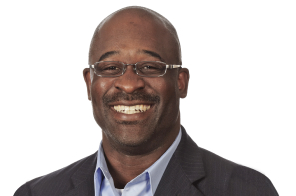2020 has been a challenging year, to say the least. And in many ways, it has also served as a wake-up call. African Americans and Hispanic/Latino Americans, who are dying of COVID-19 at a much higher rate, have brought the topic of racial health disparities to our everyday conversations. Weeks later, the tragic death of George Floyd again highlighted how racial disparities permeate our culture and institutions.
As an African American healthcare CEO and emergency physician in an underserved rural community, social justice — and especially healthcare justice — is close to my heart. I am a firm believer that we are only as healthy as the most vulnerable among us. As the pandemic has shown us, this applies doubly to public health.
I am hopeful that this tragic and unfortunate event will help us get to a more just world where preventable health conditions are indeed prevented. In this article, I share some personal thoughts on what healthcare justice means and what it will take to achieve it.
Healthcare Discrimination Common Denominators
The causes of these and other disparities are complex and vary geographically. (I encounter different inequities in central California than do my colleagues in Chicago, for example). But they have some common denominators, including:
- Geographic disparities in access
As an emergency physician in California’s Central Valley, which includes broad swaths of “medical desert,” I know firsthand that healthcare access depends on where you live. Patients in communities of color, poor urban areas, and rural areas must often travel long distances and/or endure long wait times for doctor appointments. For many, the emergency department (ED) represents the only option for timely care.
- Distrust of the healthcare system
Unfortunately, doctors, hospitals, and medical researchers have sometimes violated the human rights of vulnerable people. The Tuskegee Syphilis Study was one of many cases in which black people were subjected to unethical medical research without informed consent. Medicine has also been used to pathologize people fighting for equality (for example, branding black civil rights activists as dangerous paranoid schizophrenics in the 1960s).
I’d like to believe that we’re past all that and that things are different today. But then I see undocumented patients in my rural ED who have delayed life-saving care for fear that their status will be discovered and reported to immigration authorities.
- Lack of clinical competence
Many providers are misinformed (or underinformed) about appropriate clinical care for minority patients. Some providers unknowingly or inappropriately believe information that historically has been accepted but has never been medically proven, like a survey that found up to 40% of medical students believed black people have higher pain tolerances.
Economic Solutions: No Magic Bullet
Having immigrated to the United States from Canada, I am often asked if universal coverage solves health disparities. Universal or expanded coverage may help in the short term with disparities related to access, but true healthcare justice requires much, much more. And while health inequality does disproportionately affect the poor, wealth does not insulate one completely from systemic health inequities. Wealthy and middle-class black men are still more likely to experience heart disease, diabetes, and premature death. And almost every black physician, healthcare leader, medical student, and academic I know (myself included) have experienced discrimination – from microaggressions to outright racism.
Justice Starts with Each of Us
What else needs to happen to eliminate health disparities? Fundamentally, I believe that healthcare justice must start in the heart of each provider. We can start by having the conversation and acknowledging that health inequality and inequity is real. Only then can we commit to treating each patient as an individual and recognize our biases and programming.
As healthcare leaders, we must “walk the walk” to promote this level of inclusiveness and consciousness across our organizations. Both personally and professionally, this means modeling honesty, humility, openness, and willingness to learn. It also means factoring inclusion into every decision by routinely seeking input from diverse stakeholders.
Here are a few critical steps that healthcare administrators, clinical leaders, and providers can take to help usher in change.
1. Talk about disparities
Initially, the most powerful action we can take is to start a conversation and keep it going. There are likely people within your hospital, health system, or physician group who consider health disparities “not that serious” or “someone else’s problem.” Through our collective example, we can send the message that discrimination hurts everyone and that we all have a responsibility to correct it. Remember this simple rule: “If one of us is hurting – all of us are hurting!”
Read more about Esther Choo, MD champion for equity and diversity in medicine and recipient of the Dr. Wes Curry Emergency Medicine Diversity Leadership award at Vituity’s 2019 Executive Leadership Diversity Summit.
2. Create opportunities for diverse leaders
Research suggests that when it comes to diversifying our C-suites, boardrooms, and clinical leadership, standard leadership training is not enough. To maximize the benefit that diversity and neuro diversity brings to an organization, we must actively create pathways for promising candidates. Consider how mentorship, pipeline programs, and personal relationships can help to diversify all levels of your organizations.
Learn more about how healthcare organizations can attract and nurture diverse leaders from Savoy Brummer, MD.
3. Make culturally competent care the standard
Culturally competent providers who understand the communities they serve can make a massive difference in the health and well-being of their patients.
Recruiting locally is one of the easiest ways to ensure this competence. Understanding the biopsychosocial factors that affect healthcare in a particular community is much easier when you are from that community. When Vituity moved into new cities like Baltimore and Washington D.C., we invested heavily in outreach to local physicians, teaching hospitals, and medical schools. As a result, we quickly recruited providers who understood the culture, needs, and strengths of these communities. Further, through our partnership with the National Diversity Council, Vituity provides first-rate cultural competence training to help providers better serve diverse patients.
Healthcare Justice at Vituity
As CEO of Vituity, I’m proud to be part of organization that advocates for healthcare justice while leading by example. Our physicians are actively advocating for patients who are unable to advocate for themselves. We also focus on developing care delivery models that expand access to vulnerable populations. Examples include the California Bridge Program aimed at promoting MAT access in the ED and our groundbreaking approaches to acute behavioral healthcare.
I also believe that to change the world, we must address inequities beyond the physical walls of our Vituity practice locations. To this end, we launched the Vituity Cares Foundation in summer 2020, with goals to build representation in the provider workforce, provide care to vulnerable communities, and develop solutions that address social determinants of health. I am incredibly excited about the impact this foundation will have on eradicating healthcare inequality.
As a physician-owned and -led organization, Vituity is in a unique position to make lasting change in healthcare delivery across the country.
























